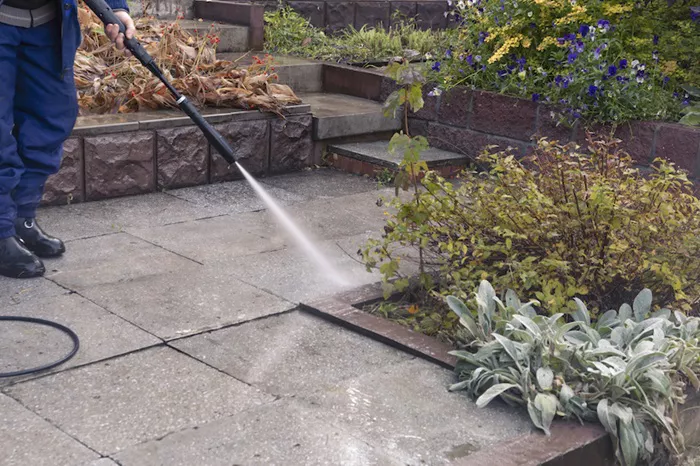If you notice dark streaks or spots around your garage door seal, it’s likely mold. Mold is especially common in humid or rainy climates.
While it may seem harmless at first, mold can slowly eat away at surfaces, stain trim, and even cause respiratory irritation if it spreads indoors. Luckily, you don’t have to buy a pressure washer or use a complicated solution. The answer may be right under your bathroom sink.
Try this one: Scrubbing Bubbles Bleach Bathroom Cleaner. While it’s commonly used to remove grime from tubs and tile, its bleach-based formula is surprisingly effective, especially for removing mold from exterior surfaces like garage doors.
You might not think it would work well on the seal around your garage door, but it does. No scrubbing, no hose, and no pressure washer required. Just a towel, some patience, and a quick spray.
Before you begin, gather the following supplies: Scrubbing Bubbles bleach cleaner, an old towel (to prevent overspray), gloves and a mask (for safety), and goggles. Opening the garage door to ventilate and protecting nearby surfaces will ensure that the bleach doesn’t spread or damage other materials.
This is a quick, affordable solution to avoid a bigger headache later. If you’re looking to clean up other areas of your garage, here are 12 easy garage cleaning tips you won’t want to miss this spring.
Once you’ve opened your garage door and prepared for the job, the actual cleaning is pretty simple. Wearing gloves, spray Scrubbing Bubbles directly onto the affected areas, especially around the seals where mold and mildew can easily grow. Place a towel or rag behind the surface as you spray to absorb any residue. Then… just walk away.
The bleach solution will cling to vertical surfaces and break down the mildew stains on its own. No need to scrub or rinse. Just let it sit. After about 10 to 15 minutes, inspect the area. In many cases, the mold will fade significantly or disappear completely.
If there is a stubborn residue, spraying again may help, or you can gently wipe with a damp cloth. Either way, this is a low-effort, high-reward tip. That being said, bleach is not a cure-all cleaning method, and there are certain items that should never be cleaned with bleach.
If you want to go a step further, you can add mildew-resistant weatherstripping or apply a clear outdoor sealant to prevent future buildup. You can even paint or refinish the molding for a cleaner, shinier look.
The reason this tip is so effective is because bleach is a mildew killer for non-porous surfaces, and its foaming action allows it to cling to surfaces better than traditional liquid cleaners. It’s an effective and convenient product to reuse, proving once again that sometimes the best home fixes come from unexpected places.
As always, be extra careful with cleaning supplies and follow these important precautions before using bleach to clean your home.
Related topics:
- Review: Yeedi M12 PRO+ – Smart Cleaning Evolved
- ALDI Launches Its Own Electric Floor Scrubber for Just $20
- Debenhams Launches £30 ‘Miracle’ Car Dust Remover

